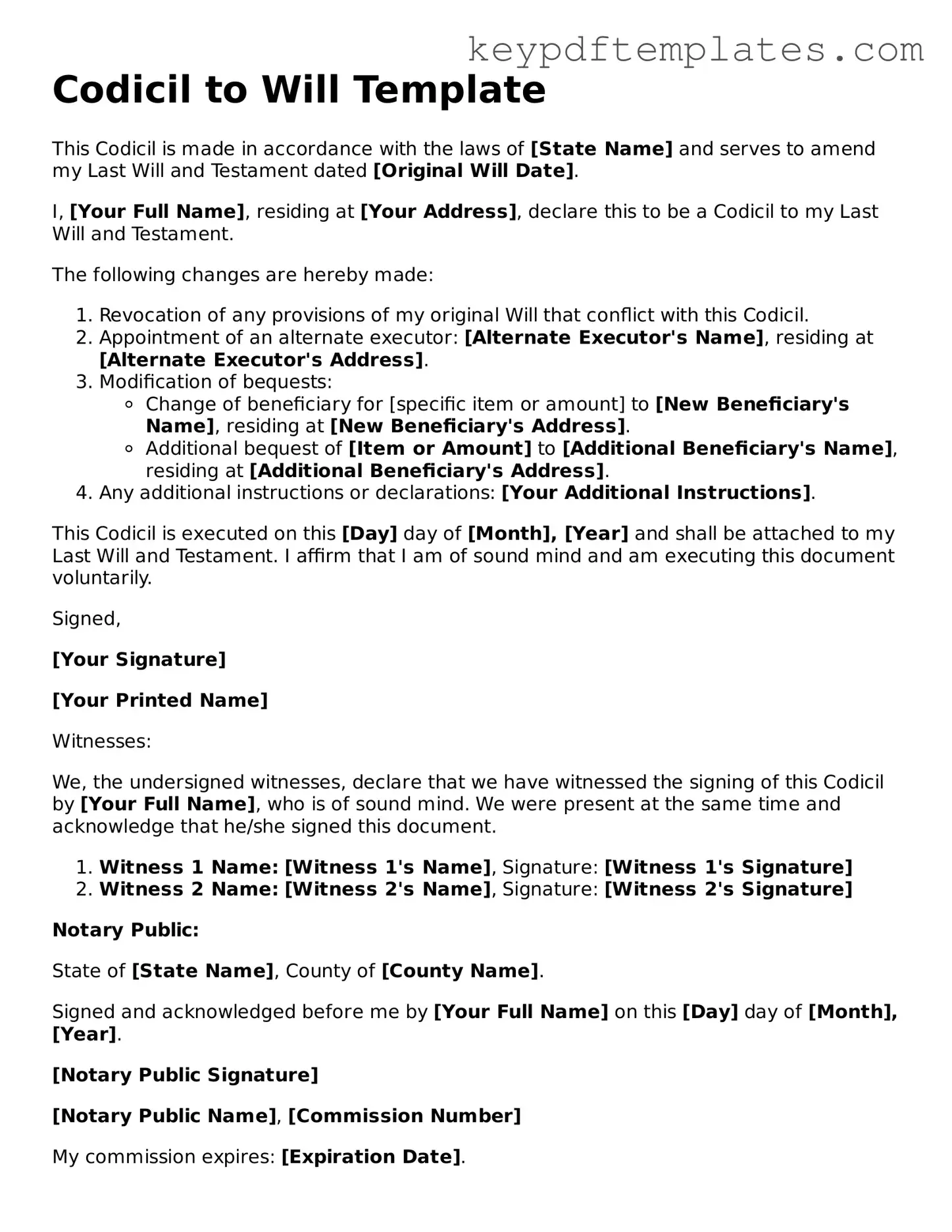Printable Codicil to Will Template
A Codicil to Will form is a legal document used to make changes or additions to an existing will without having to create an entirely new one. This form allows individuals to update their wishes regarding the distribution of their assets, appoint new executors, or modify beneficiaries. Understanding how to properly utilize a codicil can ensure that your estate plan remains current and reflects your intentions.
Modify Document Online
